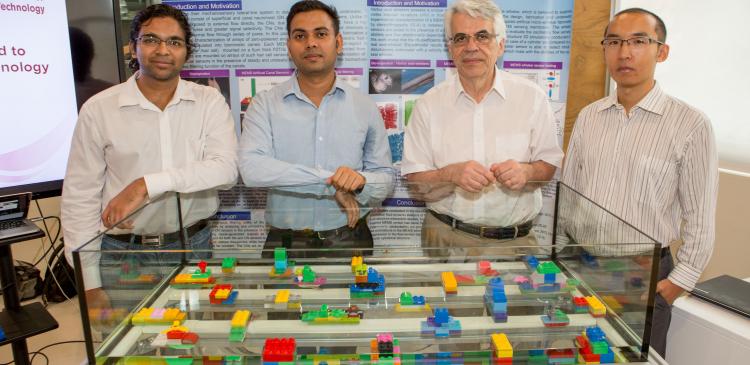Close-up of blind cave fish
1. Singapore – Inspired by the blind cave fish, researchers at the Singapore-MIT Alliance for Research and Technology (SMART) [新加坡-麻省理工学院科研中] have developed Micro-Electro-Mechanical Systems (MEMS) flow sensor so tiny and sensitive that it can be implanted into the IV or intravenous set-up, to aid in regulating the velocity of the fluid flow with minimal intervention by the nurses, thereby reducing their workload while increasing their productivity by 30%; and significantly decreasing the complications of drug infusion via IV therapy. These sensors can also be incorporated into marine underwater robots, lending them sensitivities to wakes, akin to the blind cave fish itself, so that the robots can manoeuvre in a highly energy-efficient manner.
2. This groundbreaking research ‘Nanofibril scaffold assisted MEMS artificial hydrogel neuromasts for enhanced sensitivity flow sensing’ was just published in Nature Scientific Reports on 14 Jan 2016 and validates the development of superficial neuromast-inspired flow sensors that can attain high sensitivity and resolution through biomimetic soft-polymer materials.
3. Currently, nurses check the patient’s IV about once every hour and after any major position change of the patient to ensure that the IV is still infusing at the correct rate. This is because any small movement by the patient or shift in position can change the rate at which the IV infuses. This rate of flow is controlled by the roller-clamp, which the nurses have to tweak periodically. Inaccurate flow control in infusion therapies could lead to a number of medical complications such as edema, which is potentially fatal.
4. Researchers at SMART Centre for Environmental Sensing and Modeling [CENSAM (环境监测及模拟中心)], have developed these bio-inspired sensors which can be inserted into the IV tube by the manufacturer at its sterile site, and either:
a. Connected to a control unit that can automatically re-adjust the flow velocity; or
b. Connected to an alarm to alert the nurses
5. These sensors cost less than S$1 per IV tube, while the control unit which the researchers are developing, will cost no more than $120. The alternative – the alarm – would cost even lesser at $30. These costs are much lower than the peristaltic pump, costing a few thousands, used mostly in the hospital Intensive Care Units.
6. SMART Postdoctoral Associate, and lead author of the paper, Dr Ajay Kottapalli (阿杰 蔻塔帕里) explains: “In nature, we find fine designs of biological nanosensors that work efficiently and accurately, and are long lasting. The fundamental motivation of my research work has been to study the ubiquitous yet recently discovered scientific principles of nanoengineered sensors in nature and apply those lessons to design artificial nanosensors to target a specific application. Functioning with principles analogous to the hair bundles, the sensors achieve an accuracy below the keep-vein open velocity.”
7. Prof Michael Triantafyllou (迈克尔 崔昂塔夫罗), SMART Principal Investigator (PI) for CENSAM said: “Although there are sensors that can detect velocity, the new sensor is unique because it combines the inexpensive fabrication and accuracy of the MEMS sensors with a robust design which makes it suitable for medical application. I’m pleased to see the translational aspects of our research, where real impact is made to both the health and marine/robotics community.”
8. Having worked on this research since 2014, the CENSAM team hopes to make the sensors robust and hence ready for routine use in biomedical applications.
9. This research was funded by the National Research Foundation Singapore under its Campus for Research Excellence and Technological Enterprise (CREATE) programme. It is a collaborative project between SMART and Nanyang Technological University; and its translational work from lab to market was funded by the Innovation Grant of $250,000 disbursed by SMART Innovation Centre.
(L-R) Mr Vignesh SUBRAMANIAM, SMART Research Engineer; Dr Ajay KOTTAPALLI (阿杰 蔻塔帕里) SMART Postdoctoral Associate, and lead author of the paper; Prof Michael Triantafyllou (迈克尔 崔昂塔夫罗), SMART Principal Investigator (PI) for CENSAM; and Dr Zhiyuan SHEN, SMART Postdoctoral Associate, with the tank full of lego bricks as obstacles to show how the blind cave fish swim without hitting these obstacles.





